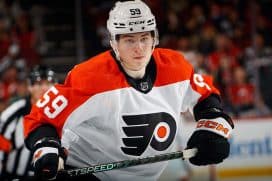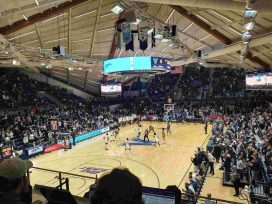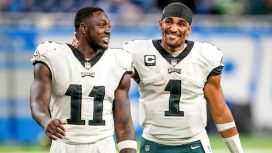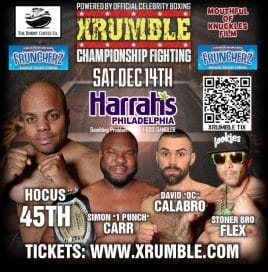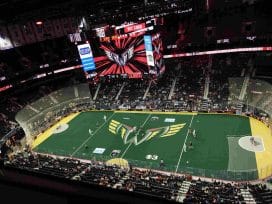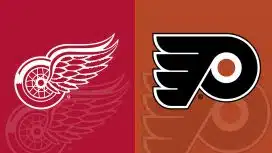Phillies
Top 25 Players to Ever Play a Game for the Phillies: No. 16, Richie Ashburn
By Matt Albertson, Historical Columnist
Hall of Fame manager Leo Durocher once explained that "[Richie] Ashburn is the fastest man I've ever seen getting down to first base…anybody who's faster than Ashburn isn't running. He's flying." Durocher saw quite a bit of Ashburn as the manager of many successful Dodger and Giant teams in the late 1940s and 1950s.
"Whitey," as he was known to Philadelphians for the better part of five decades as a player and broadcaster, is often overlooked because he played in an era of exceptional center fielders; Willie Mays, Mickey Mantle, and Duke Snider. His speed served him well throughout his career as the prototypical leadoff hitter and excellent outfielder. Hall of Fame teammate Robin Roberts agreed with Durocher's assessment: "The only complaint I have about him is he wasn't tall enough to catch the balls that went into the seats…he caught everything else."
The Phillies got lucky (not often said) with Ashburn. Ashburn signed a contract with the Indians while in high school, but the commissioner voided the contract because Ashburn was too young (16 years old). Upon graduation, Ashburn signed a contract with the Cubs' minor league affiliate in Nashville. However, a contingency bonus was included in the contract whereby if Ashburn's contract were purchased by the Cubs, he would get a portion of the sale price, also prohibited by baseball. A free-agent again, Ashburn signed a $3,500 contract with the Phillies in 1945. After two years in the minors and one year in the military, Ashburn was invited to Phillies Spring Training in 1948, but wasn't given much of a chance to earn a roster spot since the Phillies had the defending National League batting champion Harry "The Hat" Walker patrolling center field. Unfortunately for Walker, he was the latest Wally Pipp.
Unfortunately for Walker, Ashburn turned out to be pretty good in 1948, earning All-Star honors and finishing third in Major League Rookie of the Year voting. He also turned out to be very durable, typically playing over 150 games per year when a season was 154 games (changed to 162 games in 1961). Despite typically registering between 500 and 750 plate appearances each season, Ashburn only hit 29 home runs in his career. If you're curious, that ranks 100th on the list of 252 Hall of Famers, including pitchers. He was a centerpiece of the 1950 "Whiz Kids" lineup, which fell to the Yankees in the 1950 World Series. (Ashburn didn't have a good series at the plate, which was uncharacteristic of his hitting prowess, but then again, no Phillie hit well in the 1950 World Series.)
Whitey twice led the league in batting, hitting an astounding .350 in the 1958 season, and three times had over 200 hits in one year. In his 15 seasons, he failed to reach double digit stolen base totals in only three seasons, leading the league in 1948 with 32. His best statistical season was 1958 when he led the league in batting average (.350), plate appearances (725), hits (215), triples (13), walks (97), on-base percentage (.440), and putouts (494). It was a marvelous bright spot in an otherwise dismal baseball season for Philadelphia, who finished 69-85.
The Phillies traded him to the Cubs after a subpar 1959 season for John Buzhard, Al Dark (who won the 1948 Rookie of the Year award) and Jim Woods. None of these players panned out for the Phillies, while Ashburn bounced back before finishing his career with the expansion New York Mets in 1962.
While with the Mets, Ashburn helped to define the Mets' putrid 1962 season (they finished 40-120). The Mets Spanish speaking shortstop Elio Chacon had numerous almost-collisions with Met outfielders when tracking fly balls. Chacon didn't understand "I got/have it," so Ashburn asked a bilingual Mets player how to utter the phrase in Spanish. Soon thereafter the situation presented itself and Ashburn yelled "Yo la tengo"; Chacon veered off but Spanish-ignorant outfielder Frank Thomas bowled Ashburn over. Thomas asked Ashburn "what's a yellow tango?"
Ashburn refused to sign a contract in 1963 and became the Phillies' color commentator that year, a role that he served in for 35 years. Whitey was largely forgotten behind the New York trio mentioned above as one of the game's best center fielders. He failed to earn induction into the Hall of Fame via BBWAA ballot, peaking at 41.7% in 1978. He was finally inducted via Veterans committee in 1995, joining fellow Phillie Mike Schmidt as the newest Hall of Famers that year.
Career Accomplishments
- Hall of Fame (1995)
- Five-time All-Star (1948, 1951, 1953, 1958, 1962)
- National League Batting Champion (1955 and 1958)
- League leader in hits (3), triples (2), walks (4), and putouts (9)
*Awards were not factored into the formula
Career-Defining Moment
In 1950, the Phillies chased after their first pennant since 1915, but squandered a six-game lead down the stretch. If they lost on the season's final day against Brooklyn, the Dodgers would have forced a tie and a one game playoff. With none out in the bottom of the ninth inning and the score tied at one each, the Dodgers had runners on first and second. Duke Snider lined a ball sharply to center field. Cal Abrams, on second base, charged around third trying to score the winning run and force the playoff. Ashburn fielded the ball cleanly and fired a perfect strike to catcher Stan Lopata; Abrams was a dead duck. The Phillies survived the inning and won the pennant in the 10th, when Dick Sisler hit a three-run home run.
Reasoning for ranking
Ashburn scored 38 points in our formula. He totaled 63.6 WAR, averaging 4.24 WAR over his 15 seasons. He had 13 seasons of 2+ WAR and seven seasons at 5+ WAR, totaling 34 points. His .308 batting average is 121st all time, his 2,574 hits is 90th all time, and his 109 triples are 128th all time, totaling four points. Not added into our equation were his 5,801 putouts as a center fielder, which is second all time; and his 153 assists as a center fielder, which is eighth all time.
Ashburn scored a six out of 10 on our subjective importance scale because he was the centerpiece of the lineup between during down years. However this simply takes into account his playing career. Had we included his time as a broadcaster, Ashburn would easily rate a 10 because he was central to Phillies fans' lives for over 50 years.
Explanation of scientific formula
The player rankings formula combines both traditional and advanced statistics/metrics and assigns a point total to each category.
